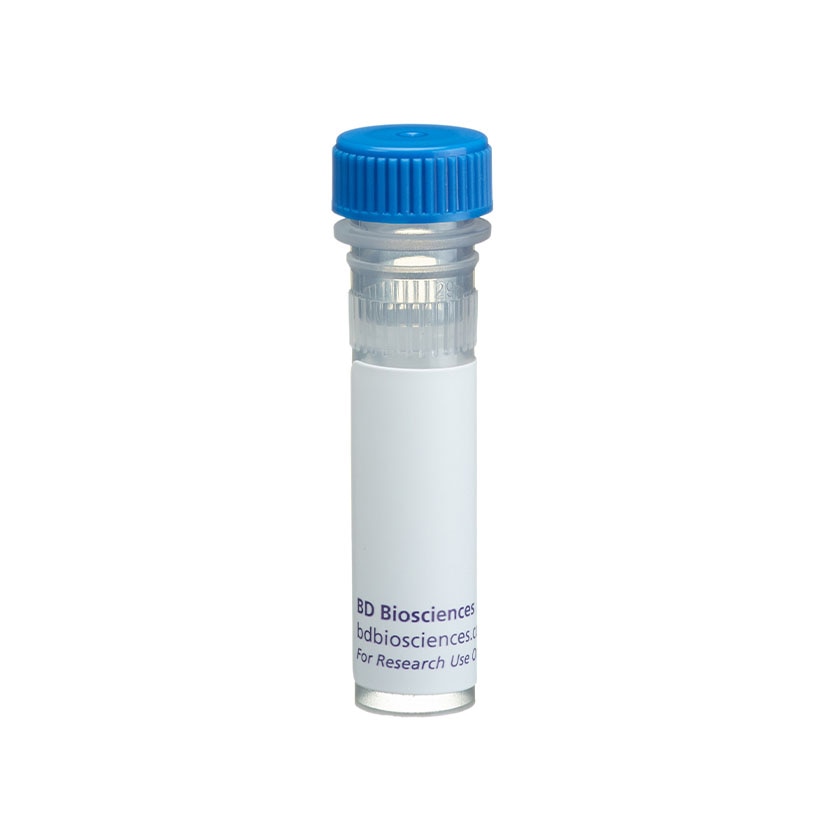Old Browser
Looks like you're visiting us from {countryName}.
Would you like to stay on the current country site or be switched to your country?





Western blot analysis of p53 on A431 lysate. Lane 1: 1:500, lane 2: 1:1000, lane 3: 1:2000 dilution of p53.

A431


BD Transduction Laboratories™ Purified Mouse Anti-p53

BD Transduction Laboratories™ Purified Mouse Anti-p53

Regulatory Status Legend
Any use of products other than the permitted use without the express written authorization of Becton, Dickinson and Company is strictly prohibited.
Preparation And Storage
Product Notices
- Since applications vary, each investigator should titrate the reagent to obtain optimal results.
- Please refer to www.bdbiosciences.com/us/s/resources for technical protocols.
- Caution: Sodium azide yields highly toxic hydrazoic acid under acidic conditions. Dilute azide compounds in running water before discarding to avoid accumulation of potentially explosive deposits in plumbing.
- Source of all serum proteins is from USDA inspected abattoirs located in the United States.
The p53 protein is critical to regulation of normal cell growth and is a suppressor of tumor cell proliferation. Inactivation of p53 by a number of mechanisms, such as missense mutations or interaction with oncogenic viral or cellular proteins, can result in tumor progression. Mutations and/or allelic loss of the p53 gene is associated with a wide variety of human tumors. Known to have a role in transcriptional regulation, p53 suppresses various promoters containing TATA elements in an apparently sequence-independent fashion. p53 also binds to DNA in a sequence-specific manner via recognition of a 20 bp consensus-binding site. This interaction stimulates the expression of genes downstream of the p53 binding site. A number of genes that contain p53-binding sites have been identified, including MDM2, GADD45, and muscle creatine kinase. It is thought that MDM2 is a feedback regulator of p53. In addition, a p53-inducible gene, Cip1, has been identified and shown to suppress tumor cell growth in culture.
Development References (5)
-
Hurd C, Khattree N, Alban P. Hormonal regulation of the p53 tumor suppressor protein in T47D human breast carcinoma cell line. J Biol Chem. 1995; 270(48):28507-28510. (Clone-specific: Western blot). View Reference
-
Mercer WE. Cell cycle regulation and the p53 tumor suppressor protein. Crit Rev Eukaryot Gene Expr.. 1992; 2(3):251-263. (Biology). View Reference
-
Natsugoe S, Nakashima S, Matsumoto M. Expression of p21WAF1/Cip1 in the p53-dependent pathway is related to prognosis in patients with advanced esophageal carcinoma. Clin Cancer Res. 1999; 5(9):2445-2449. (Clone-specific: Immunohistochemistry). View Reference
-
Saitoh H, Pizzi MD, Wang J. Perturbation of SUMOlation enzyme Ubc9 by distinct domain within nucleoporin RanBP2/Nup358. J Biol Chem. 2002; 277(7):4755-4763. (Clone-specific: Immunofluorescence). View Reference
-
Stahnke K, Fulda S, Friesen C, Strauss G, Debatin KM. Activation of apoptosis pathways in peripheral blood lymphocytes by in vivo chemotherapy. Blood. 2001; 98(10):3066-3073. (Clone-specific: Flow cytometry, Western blot). View Reference
Please refer to Support Documents for Quality Certificates
Global - Refer to manufacturer's instructions for use and related User Manuals and Technical data sheets before using this products as described
Comparisons, where applicable, are made against older BD Technology, manual methods or are general performance claims. Comparisons are not made against non-BD technologies, unless otherwise noted.
For Research Use Only. Not for use in diagnostic or therapeutic procedures.
Report a Site Issue
This form is intended to help us improve our website experience. For other support, please visit our Contact Us page.